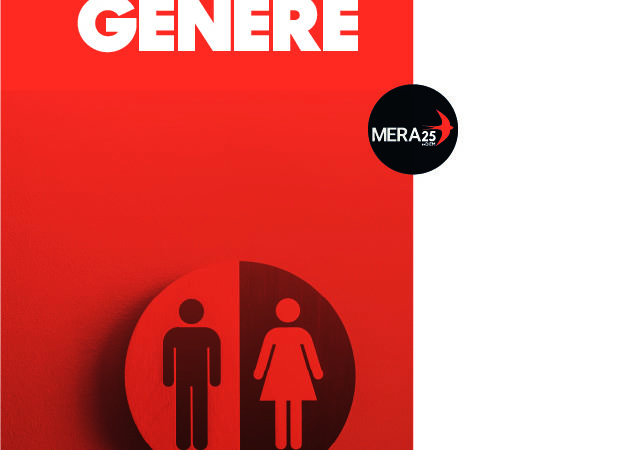There is a lot at stake in the upcoming Hungarian parliamentary election, both for the nation itself and the European Union as a whole. Csenge Schőnviszky and Máté Turi-Mészáros break down the main talking points.
Given the election campaign narratives and questions, one could easily assume that Hungary has gone back in time to the 1950s.
Peace or war? East or West? The EU or Russia? A few days before the parliamentary elections, these campaign questions can be found across the country – in political debates, on billboards and in the media.
Hungary faces parliamentary elections on April 3 but it is not just the election of the national assembly people have to decide on. The election also happens to coincide with a national referendum concerning LGBTQ rights and “child protection issues”.
There are two major forces that could take the lead; the other parties only add up to a fraction of the votes (5-6 percent according to most polls.
On one side stands the Fidesz-KDNP coalition – the ruling conservative party in Hungary since 2010, led by Viktor Orbán. It has two-thirds of the parliament on its side, which means that, according to the constitution, Fidesz-KDNP is able to vote and pass a bill without the voting support of the opposition parties. Nevertheless, the abuse of this legislative power by the leading party members became so visible and severe that, according to (Transparency International, 2022) Hungary is the second most corrupt country in the EU.
Something that is new compared to the previous Hungarian elections is that, on the other side, stands a united opposition looking to challenge Fidesz’s majority. The opposition coalition includes six parties (LMP, MSZP-P, DK, Jobbik and Momentum) and one movement (MMM) led by Péter Márki-Zay, who is the prime minister candidate supported by the coalition.
The united opposition gives the impression of a ragtag team; many of its member parties have drastically different political values and views. It is defined mainly by a multitude of compromises. Also notable is that the candidate these mostly left-leaning, liberal parties stand behind is the semi-conservative mayor of Hódmezővásárhely, who has won his office as a quasi-independent runner.
After the failure of the national elections in 2018, it was unequivocal for the opposition parties that they could not defeat the ruling party without a coalition. Thus in 2018, at the municipal elections, opposition parties nominated a common candidate in most areas and as a result, the new mayor of Budapest, Gergely Karácsony, is an oppositionist. Riding on this success, the united opposition seeks to repeat this feat.
Most polls lean towards Fidesz, with a 2-3 percent lead against the opposition coalition. The opposition argues that such polls are either not to be trusted or just not relevant because there will be a significant number of new young voters among whom the opposition is much more popular than Fidesz-KDNP. Also, the opposition candidate Márki-Zay often refers to the fact that he has never won an election in which he was the favoured one by the polls.
What is essential here regarding the outcome is whether the opposition wins, or at least stops, Fidesz from gaining a 2/3 lead in the assembly with constitutional power again.
The opposition’s pre-election in which they chose their common candidate is considered a success; all the parties united behind Péter Márki-Zay, who ran as an outsider from the political sphere. The race was close between the final three candidates, Klára Dobrev, Gergely Karácsony and Márki-Zay, but Karácsony resigned in favour of Márki-Zay. The main reason for this is that Márki-Zay, as a more conservative and in essence independent candidate, would be more favourable for disenchanted ex-Fidesz voters and the undecided voters.
Each party had their own campaign until then, but it was hard to clearly communicate the shared goals in the joint opposition campaign. Due to this, much of the opposition’s campaign didn’t really get through to the public the way they intended. The complexity of the program declined into a smear campaign somewhat similar to Fideszs’.
Fidesz’s grasp on ruling and keeping voters at bay is characterised by making up grand narratives and electing public enemies, thus forcing and shaping a central discourse by which they can prevail and do most of their governmental acting. After the migration crisis in 2015, Fidesz used populist tools to strengthen the illiberal state by using dichotomous discourse that divided the society – ‘us’ the Hungarian nation and ‘the other’ – refugees, György Soros and the EU.
Using the advantages of the government’s dominance in the media, the anti-immigration campaign raised fear and xenophobia among Hungarian citizens. They reached their goal when they won the election in 2018 with a parliamentary majority. The same narrative can be observed in 2022, with a slight change – ‘us’ became their voters and ‘the other’ are the left-wing voters and their leader Ferenc Gyurcsány, who was the prime minister of Hungary between 2004-2009 (who resigned after a great scandal).
However, when Russia attacked Ukraine at the end of February, the campaign narrative changed on both sides. It is a well-known fact that the Orbán-government has a good foreign and economic relationship with Russia. Thus the ruling party had to decide where to stand – support the sanctions against Russia by the EU or stand up for the Russian leader, Vladimir Putin.
Orbán had chosen to do both; although he approved the economic sanctions, he stated that no NATO weapons to support Ukraine could cross Hungary, as the country’s most important goal is to stay out of the war and have peace. Even though Orbán stands up for peace now, since 2015 governmental communication has praised “war against Brussels and the EU” as the main message. Ever since the start of the conflict, Fidesz has tried to downplay the good Russian relations they have been proud of until now. Orbán carries on with awkward swing politics between Russia and the West.
The referendum has been called by Fidesz primarily due to pressure from the EU over discriminatory national legislation regarding LGBTQ rights. Furthermore, it has grown to serve as a new tool and focus for the current narrative that Fidesz is building to tighten its grip on a significant voter base that is opposed to the ‘Western’ wave of thought on equality, liberalisation of rights, and persuadable by denouncing narratives based on fear and uncertainty.
Several questions start with the following: “There are those who think (…), do you agree with them?” or “Do you agree with the Hungarian government (…)?”
The way the questions were asked was directional and tried to play on emotions. Unquestionably, the referendum aims to manipulate the population and allow the government to transmit the legislation as the people desire.
The referendum’s theme has provoked widespread resentment among citizens, NGOs, and even celebrities who are unregistered Fidesz voters, prompting a campaign to get people to vote invalidly.
For most young voters, the choice comes down to voting either strategically with compromise on the united opposition to overthrow Fidesz or to vote based on principles for an unlikely candidate. Either supporting a mixed opposition with which many of us have ambivalent feelings or voting on MKKP.
This small party that started as a joke, a satirical critic of contemporary Hungarian politics, has now become a reliable party with many activists and a relevant voter base, a choice for the voters dissatisfied with other options and current national politics. Whenever they happen to win a position, their practice is to put an objective professional in place to fulfil their duties.
At stake is democracy in Hungary, democratic politics in central Europe, and Hungary’s drifting relations with the EU. This is one of the most consequential elections in Europe, mainly because Orbán has been consistently undermining the rule of law, freedom of the media, and fundamental EU values and rights. The success of such tendencies – populist, anti-democratic right-winger ideologies – could pose an existential crisis for the entire EU down the road.
Fidesz has been keen on using eurosceptic rhetoric while utilising funds from EU sources for their projects, successes and interests. Even though more and more people start to question the inconsistencies of the Fidesz narrative, that doesn’t change the fact that the damage has already been done; much of the distrust towards Europe has been cemented into a major part of public opinion.
The radical polarisation of Hungarians makes it unlikely that a significant number of Fidesz voters would turn to the opposition side and vice versa for the opposition. Hence, the main question is how the undecided voters will act. Can Márki-Zay shift the tide?
Whatever the outcome may be, the next four years of governing won’t be easy for the winner; the country faces stiff challenges regarding the COVID or post-COVID situation, the Ukrainian conflict, a possible recession and the already significant inflation and debt.
Volete essere informati delle azioni di DiEM25? Registratevi qui!




